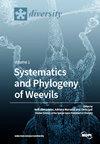西喜马拉雅生物多样性热点地区真菌多样性及其分布
IF 2.1
3区 生物学
Q2 BIODIVERSITY CONSERVATION
引用次数: 0
摘要
喜马拉雅西部地区是生物多样性的热点地区。尽管许多植物群和动物群已被记录在案,但对真菌多样性的研究却很少。本文对森林研究所真菌馆近150年来采集的样品进行了统计分析。结果表明,寄主树种松木、橡树、雪松和云杉具有较高的Shannon多样性(SD)和物种丰富度(SR),而黄檀和杜鹃花的SD和SR值为中低水平;虽然sal发生在较低海拔,但具有较高的SD和SR值。在真菌科中,水螅科的SD和SR值最高。Hymenochaetaceae、Peniophoraceae、Coleosporiaceae和Stereaceae也表现出中等程度的SD,而Fomitopsidaceae、Cronartiaceae、Ganodermataceae和theelephoraceae的生物多样性和种类都较低。象鼻科分布在海拔2000 m以上,灵芝科和膜毛科分布范围更广,分别为0-3500 m和0-5000 m。水螅科在0 ~ 4500 m之间有不同的物种分布;在2000米左右;树科、凤梨科、凤梨科和Fomitopsidaceae分布在1700 - 1800米之间,所有的树科和Fomitopsidaceae都有不同的分布范围,最高可达5000米。我们发现,降雨量相对较少的地区物种丰富度较低,反之亦然,高太阳辐射对真菌密度和SR有不利影响。而水草科(Polyporaceae)等具有较高SD和SR值的科在相对高降雨、中等太阳辐射和高温条件下生长。需要在喜马拉雅山的其他地区进行类似的研究,并且需要了解真菌在民族植物学中的重要性,以确保可持续利用。本文章由计算机程序翻译,如有差异,请以英文原文为准。
Fungal Diversity and Distribution in the Biodiversity Hotspots of the Western Himalayas
The western Himalayan region is a biodiversity hotspot. Although much of the flora and fauna has been documented, there are very few studies on fungal diversity. We present the statistical analyses of the sample collections from the last 150 years of data in the fungarium of the Forest Research Institute. We found that the host tree species—pine, oak, deodar, and spruce, had very high Shannon diversity (SD) and species richness (SR), while Dalbergia and Rhododendron had moderate to low SD and SR values; although sal occurs at lower altitudes, it has high SD and SR values. Among fungal families, the highest SD and SR value was found in Polyporaceae. Hymenochaetaceae, Peniophoraceae, Coleosporiaceae, and Stereaceae also showed SD with moderate SR. Fomitopsidaceae, Cronartiaceae, Ganodermataceae, and Thelephoraceae have low biodiversity and species. Thelephoraceae are distributed above 2000 m altitude, and Ganodermataceae and Hymenochaetaceae have wider distribution ranges, namely, 0–3500 m and 0–5000 m, respectively. The Polyporaceae show diverse variations in species distribution and occur between 0 and 4500 m; Coleosporiaceae and Cronartiaceae around 2000 m; Stereaceae, Meruliaceae, Peniophoraceae, and Fomitopsidaceae occur between 1700 and 1800 m, with all Stereaceae and Fomitopsidaceae having different distribution ranges of up to 5000 m. We found that areas with relatively low rainfall had lower species richness, and vice versa, and that high solar radiation negatively affected fungal density and SR, as observed in the distribution of Thelephoraceae. While families with high SD and SR values such as Polyporaceae were found under relatively high rainfall, moderate solar radiation, and high temperatures. Similar studies need to be undertaken in other parts of the Himalayas and the importance of fungi in ethnobotany needs to be understood to ensure sustainable use.
求助全文
通过发布文献求助,成功后即可免费获取论文全文。
去求助
来源期刊

Diversity-Basel
Environmental Science-Ecological Modeling
CiteScore
3.40
自引率
12.50%
发文量
925
审稿时长
11 weeks
期刊介绍:
Diversity (ISSN 1424-2818) is an international and interdisciplinary journal of science concerning diversity concept and application, diversity assessment and diversity preservation. It is focused on organismic and molecular diversity. It publishes reviews, regular research papers and short notes in the regular issues. Related news and announcements are also published. Our aim is to encourage scientists to publish their experimental and theoretical results in as much detail as possible. Therefore, there is no restriction on the length of the papers. Full experimental details must be provided so that the results can be reproduced.
 求助内容:
求助内容: 应助结果提醒方式:
应助结果提醒方式:


